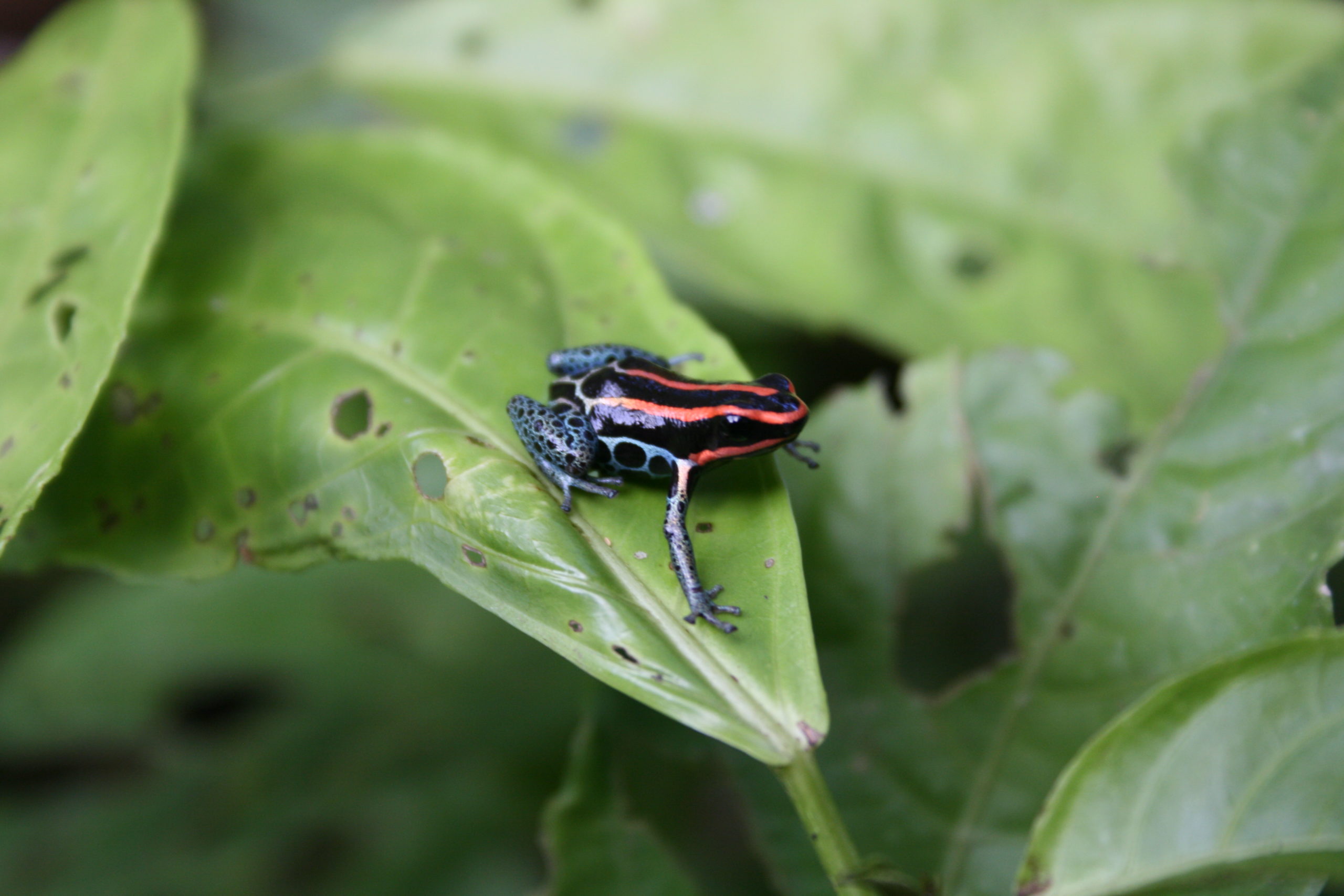Kaya Klop-Toker, a researcher studying the ecology of amphibians at the University of Newcastle in Australia, tells the story of the most memorable trip of her life. Her trip to the Ecuadorian Amazon (close to where we’ll visit on the SAVE THE FROGS! Ecuador Ecotour) was a life-changing experience. The sights and sounds are memories she’ll carry with her forever. Read on to explore the wonder of the Amazon.
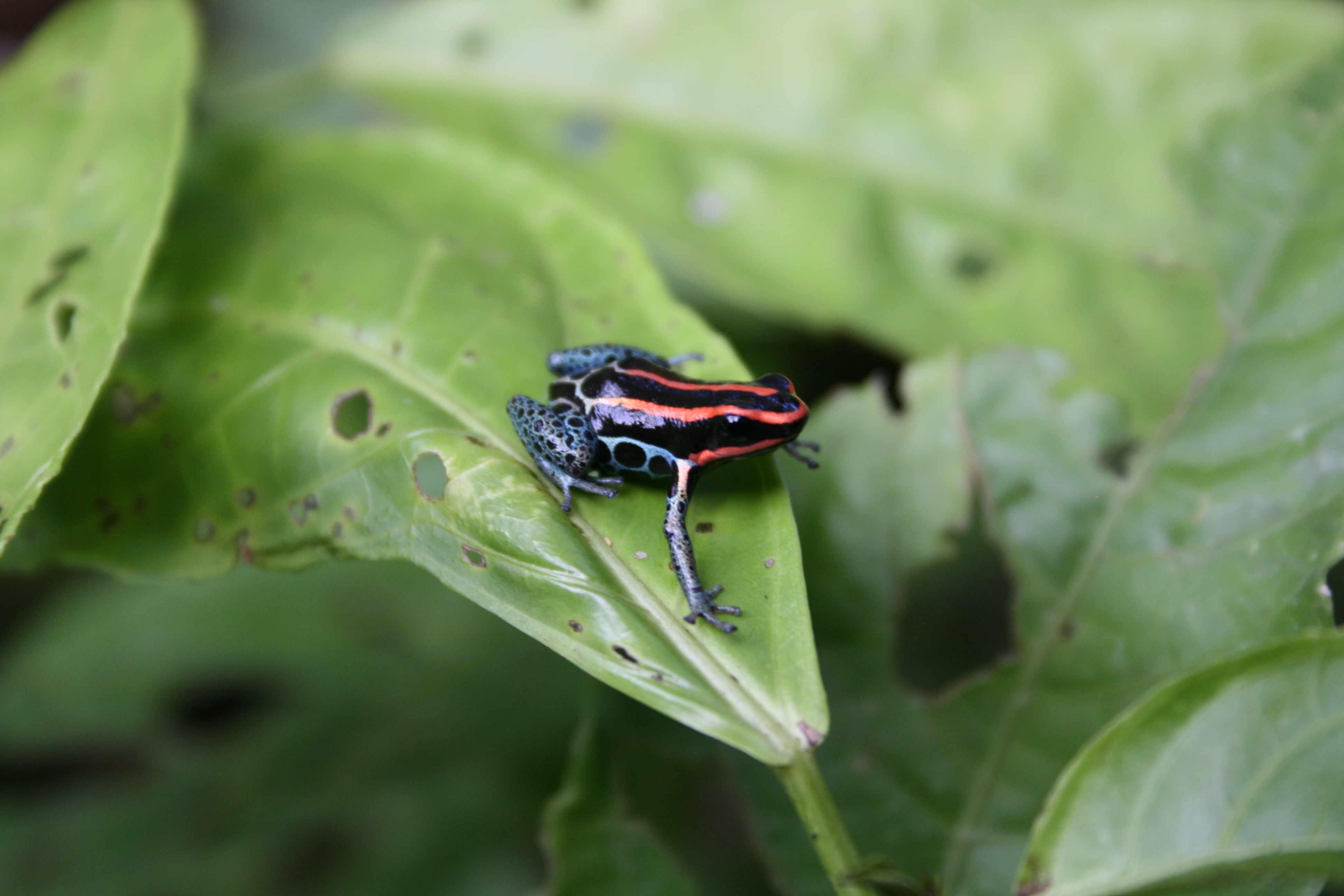
This blue and red poison frog (Ranitomeya ventrimaculata) carries tadpoles on its back. They have been seen in bromeliads more than 100 feet above the forest floor.
If you get an opportunity to spend time looking for frogs in the Amazon, you should take it! In 2008 I spent 10 weeks as a volunteer research assistant in the Ecuadorian rainforest. It was the best 10 weeks of my life. I was based in the lowland rainforest of Yasuni National Park, which is arguably the most biodiverse place on the planet. The journey getting there was in itself quite an adventure.
After arriving in the Ecuadorian capital Quito, I flew to the small town of Trinidad where I caught a taxi with a driver named Darwin (which felt like a very fateful name indeed). Darwin drove me to the Rio Napo, where I unloaded my gear under the shade of a beautiful large cecropia tree, took in the rich smell of the tropics, and waited for my turn to be ferried in a small dugout canoe across the large brown river.
Once across the river, I met my contact and drove another hour through thick jungle, until we came to my destination and home for the next two months. I was volunteering for a research team studying recently discovered frog species that live in bromeliads, high above the canopy, in the branches of emergent trees.
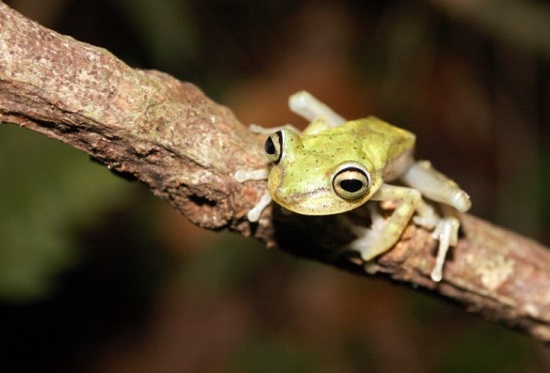
Ecuador contains an area of one of the highest densities of frogs in the world! That means when you explore at night, you’re guaranteed to find frogs.
During both the day and night, we walked through the forest searching for frogs. A walk through Yasuni National Park was never disappointing. In the day, the forest was bright, warm, and quiet – completely opposite to the dark, impenetrable landscape, full of animal calls. In the early mornings, the myriad of bird life would recite their morning chorus, often accompanied by the loud, long, guttural calls of howler monkeys.
However, during the heat of day, the birds and monkeys would subdue their calls and one could walk through the forest in pleasant, tranquil state. This quietness, however, did not equate to a lack of wildlife, and if I paid attention, I was often rewarded with numerous frog and lizard sightings along the path. Poison dart frogs were regularly encountered in the day, as well as hundreds of tiny juvenile frogs, no bigger than my finger nail. Large, languid tegu lizards would saunter across the path, and occasionally an unsuspecting tortoise.
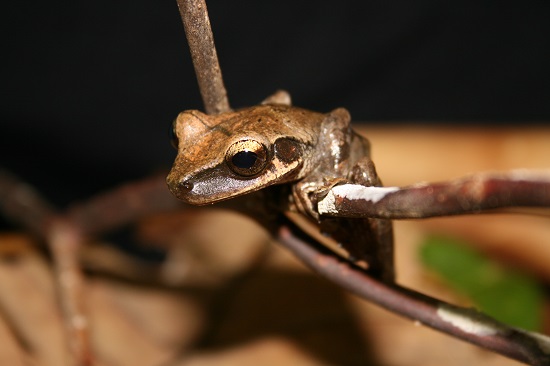
This brown treefrog can be found at night among many of species of frog in the Ecuadorian Amazon.
At night we discovered bright-green monkey treefrogs, which frequently walk on their long, skinny legs rather than jump; beautiful chocolate brown treefrogs, which look like the hopping frog confectionary from Harry Potter; and big Smokey jungle frogs with a Latin name that rolls off the tongue: Leptodactylus pentadactylus.
Nightime also revealed the beautifully-colored and aptly-named rainbow boa constrictors, and horrifyingly alien-looking, yet harmless whip scorpions. If it rained a lot and we were lucky, we found miniature snub-nosed salamanders or giant earthworms, commonly mistaken for caecilians until we felt their rough segmentation. Listing all the animals we found would take pages; such is the variety of life in the Amazon. Every time I left my accommodation, I found a unique and fascinating creature. It was like being a naïve child again where everything you see is a new, amazing discovery.
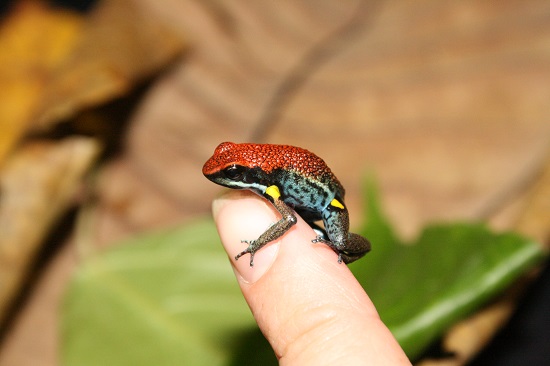
This poison frog with yellow armpits is Ameerega bilinguis, a frog commonly found in undisturbed, primary forests of Ecuador and Colombia.
Although it has been nine years, the time I spent in the Ecuadorian Amazon continues to remain one of my most exciting memories. I made lifelong friends. I furthered our knowledge of these threatened and enigmatic animals and learned skills that have been valuable to my career in amphibian conservation. However, just the experience of being immersed in the Amazon is enough to make it worthwhile. To be surrounded by jungle that stretches as far as the eye can see, to smell that rich, sweet air, and to see such variation of life is a once-in-a-lifetime experience that I hope to experience again.
To learn more about SAVE THE FROGS! Ecotours, visit:
https://savethefrogs.com/ecotours
https://savethefrogs.com/ecotours


